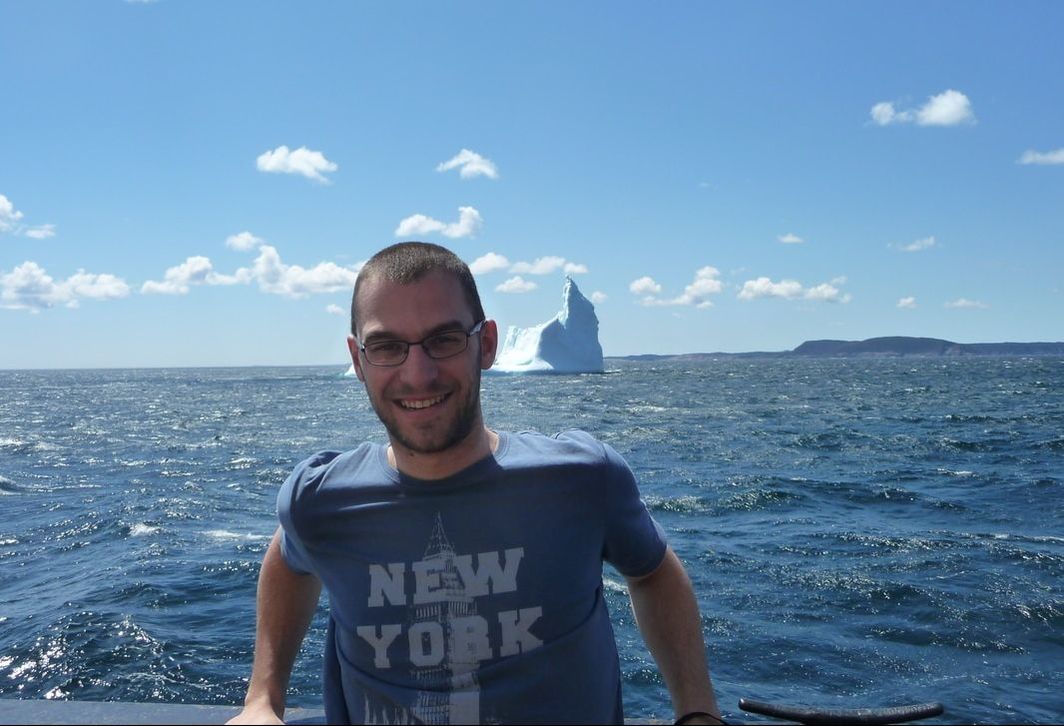|
Richard LaBrie
Postdoc [email protected] Predicting hypolimnion hypoxia PhD Biology BSc Geography Minor Mathematics |
Microbial organic carbon fluxes in the Labrador Sea
Richard’s project on microbial organic carbon is part of a pan-Canadian research group, VITALS (Ventilation, Interaction and Transports Across the Labrador Sea) which characterizes and models O2 and CO2 fluxes between the atmosphere and the deep sea. The Labrador Sea is very dynamic, both temporally and spatially, going from intense spring blooms one year to minimal production the next. The presence of several water masses coming from the Arctic and the Atlantic creates large environmental gradients along the transect of this 700 km wide sea. During winter, the cold temperatures induce a deep mixing going down to 2400m, transporting vast amount of O2, CO2 and organic carbon. Richard's work spans from characterizing the metabolic balance during the spring blooms using direct measurements to studying relationship among bacterial diversity, bacterial metabolism and organic carbon quality. He’s also working on a meta-analysis on carbon bioavailability in the oligotrophic ocean and on the role of the winter convection in deep organic carbon burial by the microbial pump. He works in collaboration with Bérangère Péquin.
Career path and other interests
Richard started his University in mathematics, before changing completely to physical geography to learn how our physical world works. During his last year in geography, he did an honor’s project on soil chemistry and mineralogy in an archaeological framework. He then joined our lab to start his Ph.D. in oceanography. His past love for mathematics has caught up with him with multivariate statistics and PARAFAC modelling.
In his spare time, Richard loves to climb boulders and play piano. If he could climb more, he would. He’s also a casual gamer, and believes spending time with friends, eating pizza, and playing WiiU make a great Saturday night every now and then.
In his spare time, Richard loves to climb boulders and play piano. If he could climb more, he would. He’s also a casual gamer, and believes spending time with friends, eating pizza, and playing WiiU make a great Saturday night every now and then.
Publications
LaBrie R. 2020. Origine, composition et destinée de la matière organique dissoute et ses interactions avec les communautés de procaryotes dans la mer du Labrador. Papyrus, http://hdl.handle.net/1866/24482
LaBrie R, Bélanger S, Benner R and Maranger R. 2020. Spatial abundance distribution of prokaryotes is defined by their dissolved organic matter preferences. Limnology and Oceanography, DOI: 10.1002/lno.11624.
LaBrie R, Lapierre JF and Maranger R. 2020. Contrasting patterns of labile and semilabile dissolved organic carbon from continental waters to the open ocean. Journal of Geographical Research Biogeoscience, DOI: 10.1029/2019JG005300.
Poisot T, LaBrie R, Larson E, Rahlin A and Simmons B I. 2019. Data-based, synthesis driven: Setting the agenda for computational ecology. Ideas in Ecology and Evolution, 12, 9-21. DOI: 10.24908/iee.2019.12.2.e
LaBrie R, Fortin St-Gelais N and Bélanger S. 2017. paRafac.correction: a R Package to correct EEMs and derive CDOM and FDOM indices. http://doi.org/10.5281/zenodo.833530
LaBrie R, Bélanger S, Benner R and Maranger R. 2020. Spatial abundance distribution of prokaryotes is defined by their dissolved organic matter preferences. Limnology and Oceanography, DOI: 10.1002/lno.11624.
LaBrie R, Lapierre JF and Maranger R. 2020. Contrasting patterns of labile and semilabile dissolved organic carbon from continental waters to the open ocean. Journal of Geographical Research Biogeoscience, DOI: 10.1029/2019JG005300.
Poisot T, LaBrie R, Larson E, Rahlin A and Simmons B I. 2019. Data-based, synthesis driven: Setting the agenda for computational ecology. Ideas in Ecology and Evolution, 12, 9-21. DOI: 10.24908/iee.2019.12.2.e
LaBrie R, Fortin St-Gelais N and Bélanger S. 2017. paRafac.correction: a R Package to correct EEMs and derive CDOM and FDOM indices. http://doi.org/10.5281/zenodo.833530


